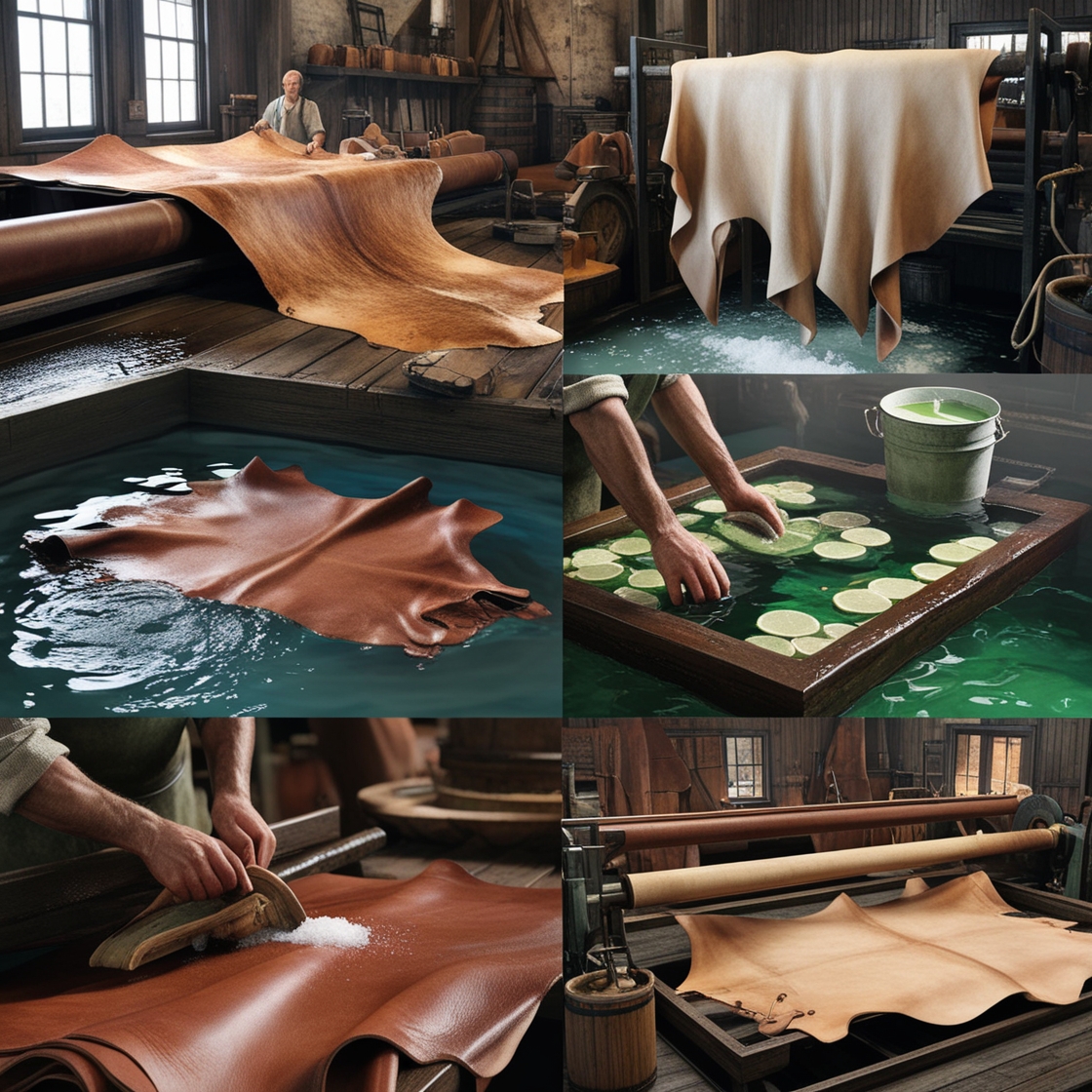Leather tanning is a meticulous art that transforms raw animal hides into durable, high-quality leather. This intricate process involves several critical steps, each essential for achieving the perfect finish. In this article, we’ll delve into the key stages of tanning, focusing on preparation, liming, and more.
Preparation: The First Step in Leather Transformation
Raw Hide Collection
The tanning journey begins with the collection of raw hides. These hides, sourced from various animals, are immediately salted to prevent decay. Salting is a crucial step that preserves the hides until they are ready for further processing.
Soaking and Cleaning
Once the hides are salted, they undergo soaking. This process involves immersing the hides in water to remove the salt, dirt, and blood. Soaking is essential for making the hides pliable and ready for the next stage.
Liming: Essential for Hair Removal and Fiber Splitting
The Liming Process
After soaking, the hides are subjected to liming. This step uses alkali substances to remove hair and split fiber bundles. Liming is a vital process that prepares the hides for the tanning solution, ensuring they achieve the desired texture and quality.
Why Liming Matters
Liming is not just about removing hair. It also splits the fiber bundles, making the leather more flexible and easier to work with. This step enhances the leather’s durability and overall quality.
Transition to Tanning Solutions
Moving Beyond Preparation
With the hides cleaned and prepared, they are ready for the tanning solutions. This next phase involves treating the hides with tanning agents to convert them into leather. This stage is where the raw material transforms into a usable and long-lasting product.
Read more about Why Leather Tanning: A Historical Perspective
Key Considerations
During the tanning process, it’s essential to monitor various factors such as temperature and pH levels. Proper control ensures the leather develops the right properties, including flexibility, durability, and texture.
Conclusion: The Craft of Tanning
The tanning process is an art form that requires precision and care. From the initial preparation of raw hides to the crucial liming stage, each step plays a significant role in transforming raw materials into beautiful, functional leather. Understanding this process not only deepens our appreciation of leather products but also highlights the craftsmanship involved in creating high-quality leather goods.
Explore our range of tanning tools and resources to enhance your understanding of leather tanning. Embrace the intricate process of tanning and appreciate the transformation from raw hides to exquisite leather.
